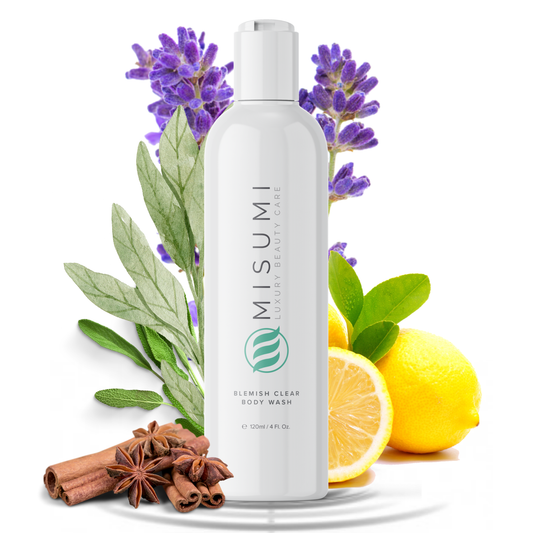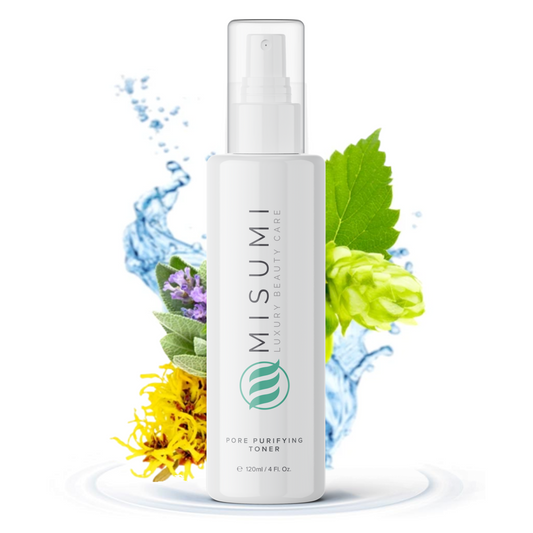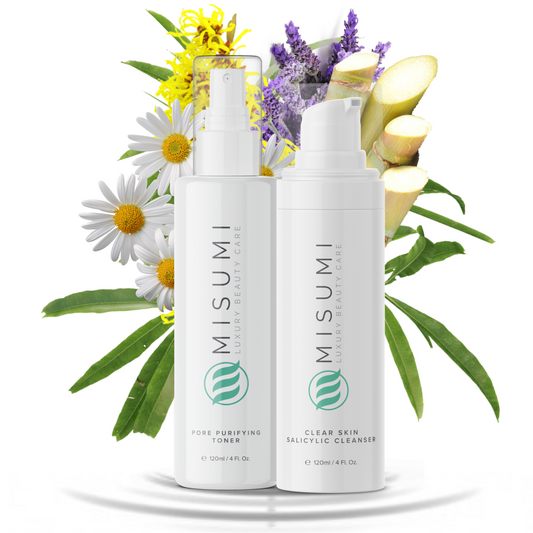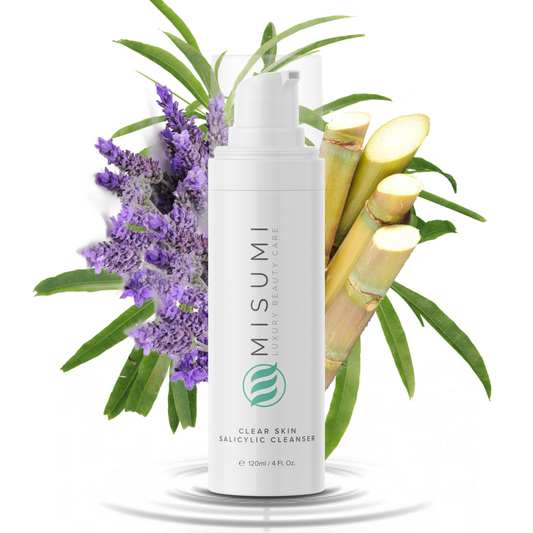Derma rolling, microneedling, collagen-induced therapy, or vampire facials are all fancy and cool names for saying: let us injure the skin, so we can force it to produce all that beautiful collagen we desperately crave and heal away our problems.
Derma rolling is a form of microneedling. If you’re googling what to use before and after derma rolling, we're guessing you plan on doing it at home.
Hey, we understand - it’s way cheaper, more practical, and wildly popular - so why not?
But do you know everything there is to know about derma rolling, including what to use before and after the treatment?
This is why we’re here. We'll explore the seemingly complicated procedure of derma rolling. So, by the time you’re done with this article, you’ll be all set to begin.
Microneedling With a Dermaroller

Dermarolling is a type of microneedling procedure that can be done at home. Microneedling is a slightly invasive, revolutionary approach to treating scar tissues, age spots, fine lines, stretch marks, wrinkles, discoloration, and other imperfections. It has an advantage over other treatments against scarring because it can handle deeper issues.
During the procedure, hundreds of small needles puncture and make micro channels in the top layers of the skin to stimulate the production of collagen, elastin, and growth factors.
Derma rolling it’s also called cosmetic microneedling. It differs from medical microneedling in three ways: the length of the needles, the conditions in which the procedure is done, and the device used. Typically, during a cosmetic microneedling procedure, you’ll use smaller needles with non-motorized devices - especially if you’re a beginner. This gives you the advantage of using a derma-roller at home.

Medical Microneedling and Vampire Facials
Microneedling with motorized, automated pens that use longer needles should be only done in a medical institution under the supervision of a trained professional. This also applies to derma-rollers with needles longer than 1-1.5mm.
If you’ve heard of the term “vampire facials,” then you might know that it's a form of medical microneedling where blood is taken from the patient and filtered. The plasma is then used on the face while microneedling to deliver more growth factors for more effective results.
Types of Dermarollers
Now we know the differences between the types of microneedling procedures, we can focus on derma rolling at home and the essentials you should know before you start.
The type of dermaroller you’re using controls which products you should or shouldn’t use before and after the procedure.
One of the crucial foundations of a successful and effective derma rolling treatment is knowing the needle size and the shape of your dermaroller. Using the right size at the right time leads to maximum efficacy and effectiveness.

A Quick Guide:
0.2 – 0.3mm size derma roller needles - This is what you should start with, no matter your skin problem. These will help you familiarize yourself with the procedure, get used to the sensations, learn how your skin reacts, and see how much time you need to heal. These needles are great for enhanced absorption of skincare products. With needles that are 0.3mm in size, you should use specific skincare products that target the issues you’re facing after treatment.
0.5mm size derma roller needles - This is the ideal needle length for treating shallow wrinkles, UV damage, light scarring, and hyperpigmentation. Of course, you also benefit from maximum absorption of skincare products, but you should use more gentle products that don’t irritate the skin.
1.0mm size derma roller needles - These needles are more effective in inducing collagen and elastin production, which means more effective results for wrinkles, severe acne scars, and sunspots. Beginners are not advised to use this length, and a numbing cream before the procedure should be used.
1.5 – 3.0mm size derma roller needles - Needles 1.5mm or longer should not be used for microneedling at home, but if you’re interested, look into medical microneedling.
Precautions and Safety Measures For Microneedling at Home

Before you begin your journey with derma rolling, it's important to know what you should use to enhance the results. It’s even more important to know what you shouldn’t use to avoid irritation, inflammation, or infections.
Preparing The Skin: Dos and Don’ts Before Derma Rolling
First Things First: Are You Suitable For a Dermaroller?
Don’t take any chances. Before using a dermaroller on your face, find out whether your skin can take it.
Consider your skin condition. You should not use a dermaroller if you have active acne, blood clotting disease, bruises, eczema, psoriasis, rosacea, herpes, cold sores, inflammation, melanoma, open wounds, sunburns, etc. It’s best to consult a dermatologist if you have any concerns about your skin condition before derma rolling.
The second thing to consider is medication. If you’re taking any drugs, whether contraceptive pills or anti-inflammation and anti-acne pills, call your doctor and check whether the medication can cause complications after the treatment. The same thing applies to any topical creams or treatments you’re using.
For example, isotretinoin (brand name Accutane) should not be used six months before microneedling. And you’ll probably need to stop using anti-acne remedies while the skin is healing.
It’s important to consult a dermatologist and ask about each specific product you use.
The third thing to consider is your skin type. If your dermaroller is too harsh for your skin and causes irritation, you can still try with 0.2mm needles and see how you feel.

Do it Before Bed
After using the dermaroller, your skin will be sensitive, vulnerable, and unprotected from environmental damage. The tiny needles leave behind micro-wounds that shouldn’t be exposed to sunlight, abrasive exfoliating skincare products, or mechanical damage like picking or touching your skin.
The best way to ensure your skin will get the rest it deserves and not interrupt the healing process is to do the procedure before bed. Eight hours is the perfect rest time.
Don’t use the dermaroller in the morning and then go out. Make a plan that will benefit your skin before you start derma rolling.
Gently Cleanse the Skin
A gentle cleanser will be your best friend. Your skin needs to be clean and your pores clear before you dermaroll. This is really important since makeup and skincare products residue, impurities, and dead skin cells can cause irritation or even infection if they get inside when the needles are penetrating the skin.
Double cleansing is okay, even recommended, but don’t use a thick, alcohol-based cleanser. Stick with a light one with a mild formula. You can cleanse three times to ensure your skin is clean, but if you irritate it or dry it out before derma rolling, you're setting yourself up for irritation and discomfort.

Toner is Okay
You can use a toner to balance the pH levels on the skin, but also make sure it’s one with a gentle formula.
This also depends on whether you use toner in your daily routine. If you are and your skin is used to it, there’s no reason to skip it. But don’t go buying toners just to prepare the skin for dermaroller. Cleansing the skin is all you need.
Avoid Exfoliators
Exfoliators get a big no here. It’s totally okay to exfoliate the skin a few days before your dermarolling treatment, but don’t exfoliate right before using the dermaroller.
Your skin is about to go through an aggressive and slightly invasive treatment. Exfoliating won’t lead to faster and more effective results but might tamper the healing process.

Sunscreen and Suntanning cream
Don't use sunscreen and suntanning creams right before and after derma rolling. Stay away from suntanning cream for a longer period. Sunscreen, on the other hand, is beneficial when used every day for a week or two before derma rolling.
What does this mean?
Well, we mentioned that microneedling is only recommended for healthy skin. People with acute symptoms, like bruises, burns, or wounds, shouldn’t do it. Load up with sunscreen before the treatment to ensure your skin is healthy and not affected by sun damage, especially in summer. The sunscreen will protect the skin, making it soft and more resilient to environmental pollutants.
Just don’t use sunscreen the day you’re planning to dermaroll. To prevent irritation and infection, your skin should be clean from any skincare product residue.
Numbing Cream
When the needles exceed 0.5mm in length, or you have a low tolerance for pain, a numbing cream should be applied before the procedure. A popular choice of cream is a combination of benzocaine, lidocaine, and tetracaine (BLT). Applying a numbing cream can make the procedure painless and cut the downtime for healing.
While some experts warn that the numbing cream should be completely cleaned from the face before starting the dermarolling procedure, others say it can be left on. This also varies based on the needle size and the product formulation, but it’s best to consult a dermatologist and/or pharmacist when buying.
With these tips, you’re ready to start dermarolling. If you’re a beginner and this is your first time, just remember: double cleanse your skin and only apply numbing cream.

Treating the Skin: Dos and Dont’s After Using a Dermaroller
The First 24 Hours
We mentioned that you should plan your derma rolling sessions accordingly so that your skin has time to close up before exposure to the outside environment. The best time to dermaroll is at night before bed.
The micro-channels stay open for around an hour with the shortest needles, while up to four/five hours with longer needles. This is the most vulnerable time for your skin and the window for better absorption of skincare products. In this first hour, you can apply anti-aging products, moisturizers, serums, and other products that target specific issues. But don’t apply more than one product - you can overwhelm the skin. Choose what you want to target.
Just be extremely careful. The channels absorb toxic ingredients, so you must avoid products that irritate the skin or contain harmful ingredients.
Here is a list of the ingredients you can use:

Vitamin C
Alongside hyaluronic acid, vitamin C is the most commonly used ingredient after a microneedling procedure. If you google it, there’ll be tons of anecdotal stories, experiences, and even experts and cosmetic studios supporting it. This is because vitamin C is one of the most powerful antioxidants, the skin’s building block, and collagen stimulator. It can truly enhance the results of your dermarolling procedure.
However, many dermatologists are on the fence about whether to give their support or not. This is because it’s a sensitizing ingredient that can make the skin much more vulnerable to irritation and lead to more aggressive reactions to dermarolling.
If you have sensitive skin, it’s best to stay away from vitamin C or do a patch test to see how your skin will react.

Hyaluronic Acid
Vitamin C might have gained more popularity because it’s more potent and can maximize results, but it’s risky and with more side effects. Hyaluronic acid is the real hero among the best after-treatment ingredients to use.
Many dermatologists agree that hyaluronic acid is the ultimate ingredient to apply after derma rolling. It has antioxidative properties, replenishes the skin, is the god of hydration, and stimulates collagen production, which makes it an anti-aging ingredient. All of this, and it's also gentle on the skin. So pick yourself up a hyaluronic acid serum.
Don’t Use Products That Increase Skin Sensitivity
We mentioned that microneedling boosts the transdermal absorption of all topical products, or in other words - your skincare products will be more efficient because they’ll be directly entering into deeper layers of the skin.
This is why continuing your skincare routine after using a dermaroller is beneficial, but products with active ingredients can worsen things.
When the channels are open, they won’t select the good and beneficial ingredients. Toxic and potentially harmful chemicals will also be absorbed deeper and cause adverse reactions and complications.

Ingredients to Avoid:
- Makeup
- Comedogenic products
- Benzoic acid
- AHAs and BHA (glycolic, lactic, salicylic, and trichloroacetic acid)
- Artificial fragrances (they break down into toxic compounds)
There are a lot of ingredients that might cause problems after derma rolling. Ask your dermatologist to give you a list of all the things you need to stay away from.
Aloe Vera
Aloe vera has been praised by many bloggers familiar with derma rolling and microneedling procedures. It is a potent antioxidant, loaded with vitamins, and it’s soothing for the skin - especially irritated skin. Research and studies back this up.
However, there are no good resources to confirm that doctors and dermatologists recommend it for microneedling. If you plan to use aloe vera after your dermaroller, let your doctor or dermatologist know.

Coconut Oil
Coconut oil is another common ingredient in the after-care for dermarolling. It’s antibacterial, which can be beneficial while the skin is healing and reduce the risk of infection. The problem with coconut oil is that it’s highly comedogenic and can clog pores.
If you have dry skin and have been using coconut oil products in your skincare routine, you can probably still use it and benefit from it a day or two after the procedure. This is after the micro-channels have already closed.
Stay away from it in the first few hours because of its comedogenic properties.

Retinol
Derivatives from vitamin A, such as retinol, are one of the most powerful and proven rejuvenating skincare ingredients that can help the skin heal. But retinol has a potent and highly transformative potential that makes it unsuitable after derma rolling. It could irritate the deeper layers of the skin and tamper with the main purpose of derma rolling.
Some professionals might give retinol the green light if you’re using 0.2-0.3mm needles, but it’s still best if you go for more gentle products.
Conclusion
Derma rolling can help with a variety of skin concerns, such as acne scarring, stretch marks, and even surgical scars. We hope our complete guide has answered some of your burning questions.
References
Review of applications of microneedling in dermatology
Microneedling: Advances and widening horizons
The Effect of Aloe Vera Clinical Trials on Prevention and Healing of Skin Wound









